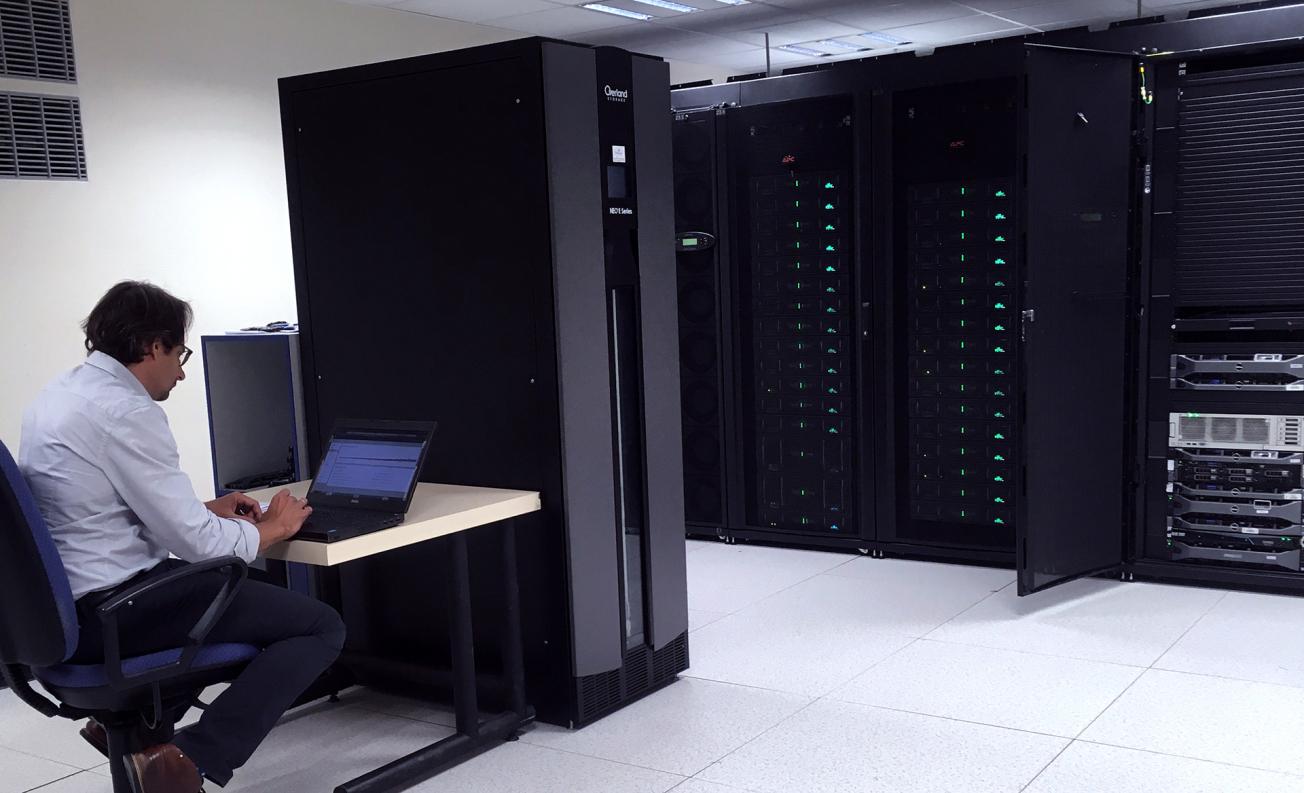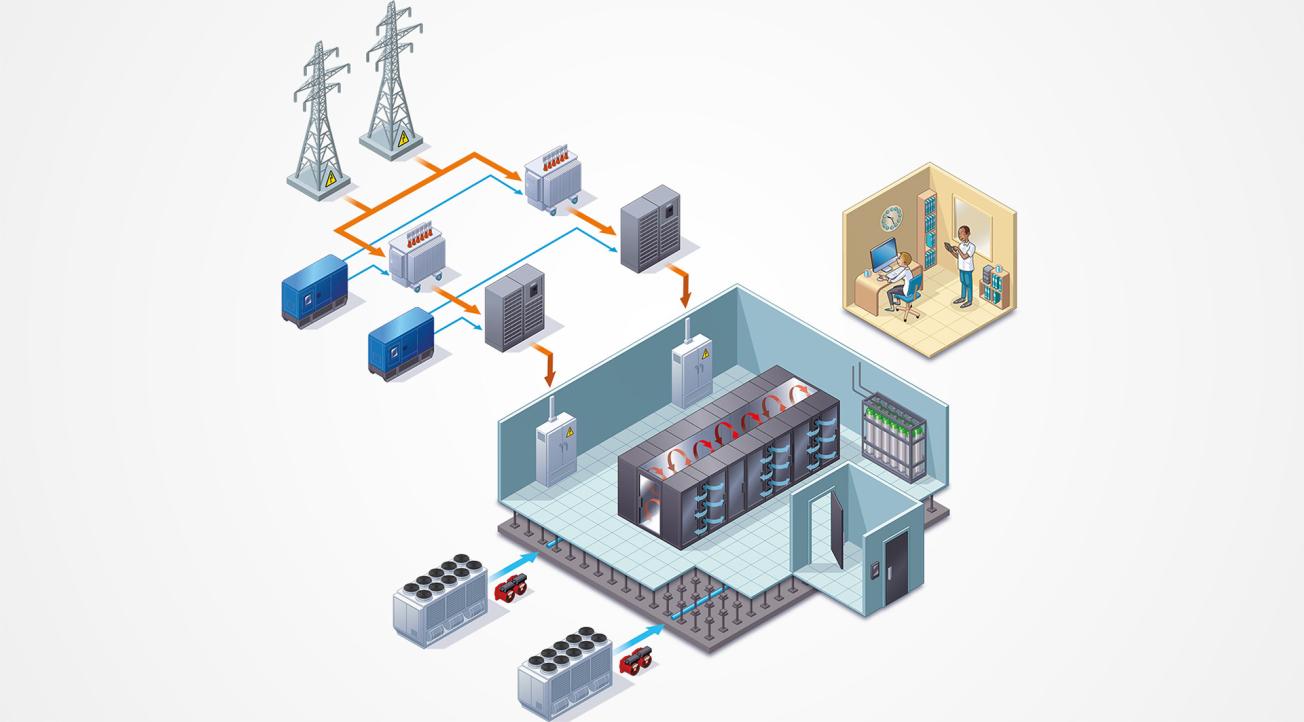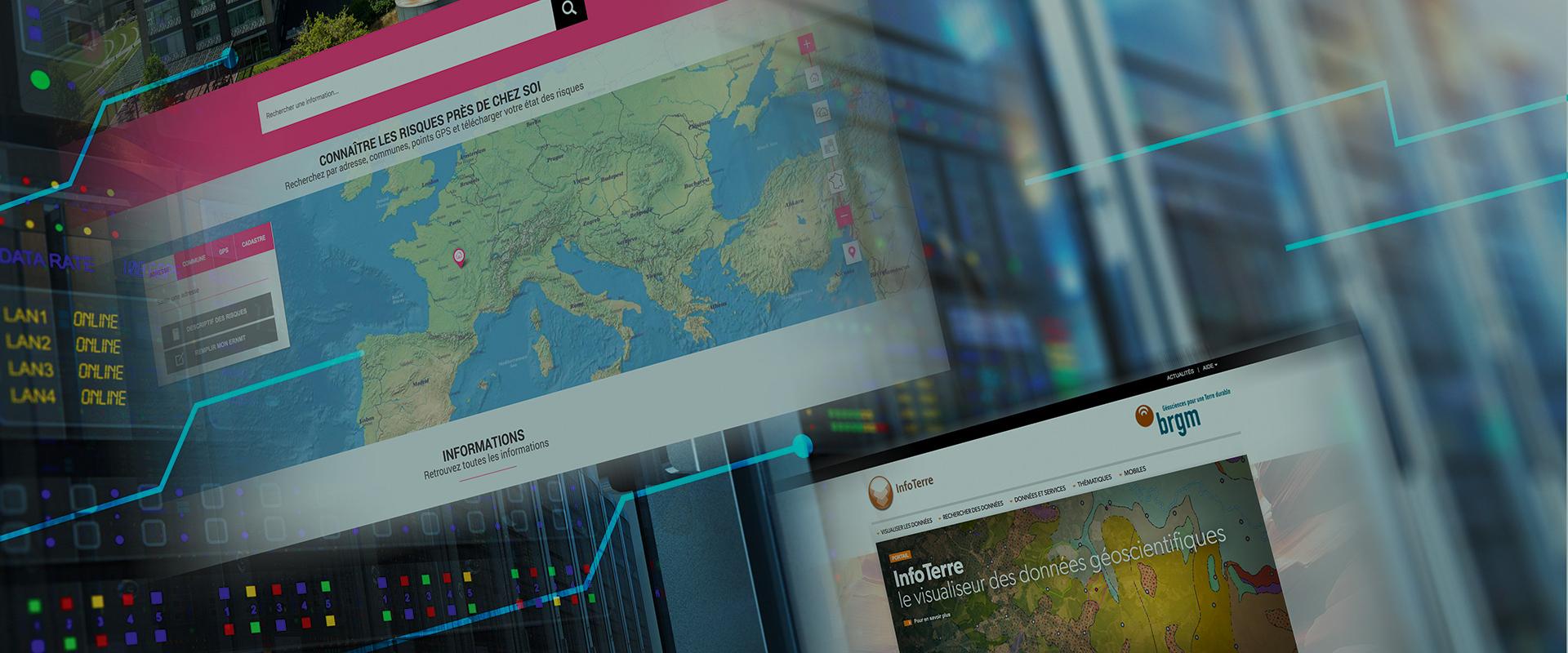
The DataCentre meets the needs of dense digital traffic, with more than 6 million annual visits and more than 500 hosted sites.
© BRGM
The fields of fundamental and applied scientific research have constantly-growing needs in terms of infrastructure, processing services and data. This is a consequence of the underlying digital transformation in society, which affects not only companies but also organisations of all kinds, including research teams. By its very nature, science is collaborative and teams already work extensively in networks. The sector has been using supercomputers for a long time to simulate a range of phenomena, and some laboratories were even at the origin of certain digital innovations. However, while industry and the service sector have numerous data centres and public or hybrid cloud solutions at their disposal (Amazon’s AWS, Microsoft Azure, IBM Cloud or, on a smaller scale, OVH), there is currently great demand among research laboratories (notably public ones) for cloud infrastructures and associated service centres. The key difference is that they require a sovereign Cloud solution capable of guaranteeing the integrity and long-term security of their research results.
Indeed, the reliability, availability, re-usability and security of digital data - as well as the provision of services for processing and exploiting these data - are essential requirements. Understanding the data, and especially how they are produced, is crucial for ensuring confidence in results and the public-policy decisions based thereon. This is one of the aims of the Orléans DataCentre project, which has been hosted at BRGM since 2020.
Innovative services for researchers and teachers
The regional players involved in higher education and research decided to pool their infrastructures and data, while also bringing together the specific areas of expertise linked to exploiting that data. The DataCentre is a conventional data centre, but, in a certain way “augmented”, since it is linked to pooled technical resources and skills, concerning different teams and professional specialisations.
In concrete terms, BRGM teamed up with Orléans University, Tour University and INSA Centre-Val de Loire in 2020 to set up this data centre. Certified as a regional data centre by the French Ministry of Higher Education, Research and Innovation, this state-of-the-art infrastructure will provide innovative services to all researchers and teachers working in higher education in the Centre-Val de Loire region from 2021 onwards.
With a budget of €9 million for the period 2021-2026, the project benefits from the financial support of its founding partners, as well as funding from the regional authorities and the French government, via the State-Region Plan Contract, as well as the European Regional Development Fund.

BRGM has been investing in its own data centres for the last 10 years in order to pool, protect and maintain environmental and geological heritage data about France.
© BRGM / H. Fournié
A virtual infrastructure providing secure data in a sovereign space
This is a state-of-the-art infrastructure in both technical and environmental terms. It provides computing, storage, backup and scientific data-processing services. BRGM is the technical operator. The DataCentre provides a whole catalogue of services for its founding stakeholders, but also for the scientific and educational communities as well as for regional public organisations. The centre is already in service, but it will be five years before it is fully operational for the founding members, who will progressively migrate their infrastructures, applications and data.
The DataCentre will be interconnected with other technical resources via the federation of centres certified by the French Ministry of Higher Education, Research and Innovation.
From a technical standpoint, the DataCentre combines great storage capacity and processing power. Since the beginning of 2021, the facility has hosted the regional supercomputing infrastructure CaSciModOT.
It will progressively roll out innovative services such as an Interactive Virtual Desktop, a Virtual Research Environment, and other specific software applications for teachers and students. The DataCentre is also a collaborative infrastructure, providing simplified access to all the data of different user communities. It is also the regional manifestation of other national and European initiatives in which BRGM is involved.







